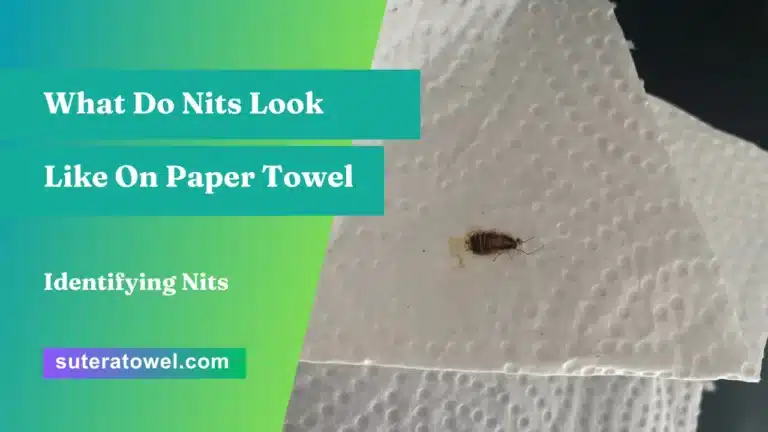Nits on paper towels appear as tiny white or translucent eggs laid by lice. Nits on paper towels are the minuscule, pale eggs laid by lice.
These eggs typically appear as small, white, or translucent specks. Nits attach firmly to strands of hair and are difficult to remove. They are commonly found near the scalp, especially behind the ears and at the nape of the neck where lice tend to lay their eggs.
Identifying nits on paper towels can indicate the presence of lice in the hair or on surfaces where infested hair has come into contact. It is important to take immediate action if nits are detected to prevent the spread of lice.
- 1 What Are Nits And Why Are They Important?
- 2 The Science Behind Nits On Paper Towel
- 3 Identifying Nits On Paper Towel: A Step-By-Step Guide
- 4 Environmental Influences On Nits
- 5 Time And Storage Effects On Nits
- 6 Chemical Interactions And Nits On Paper Towel
- 7 Myth 1: Nits On Paper Towel Are A Sign Of Contamination
- 8 Myth 2: Nits On Paper Towel Are Harmful To Health
- 9 Myth 3: Nits On Paper Towel Are Indicative Of Poor Quality
- 10 Conclusion: The Truth About Nits On Paper Towel
- 11 Frequently Asked Questions Of What Do Nits Look Like On Paper Towel
- 12 Conclusion
What Are Nits And Why Are They Important?
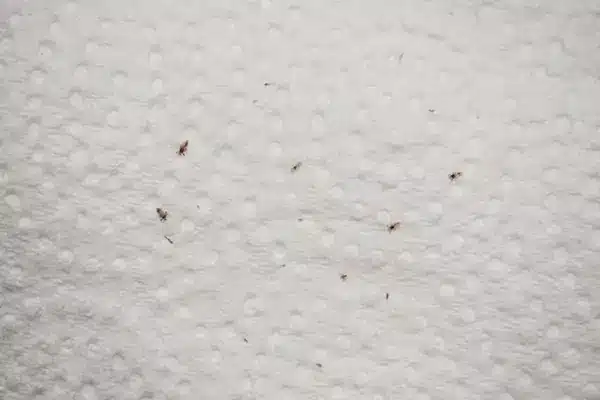
Definition and significance of nits on paper towel
Before we delve into what nits look like on paper towels, let’s first understand what nits are and why they are important. Nits are the eggs of lice, specifically head lice or hair lice. These tiny eggs are laid by adult female lice and are commonly found in the hair of infested individuals. However, they can also occasionally be found on objects such as paper towels.
Now, you might wonder why its on paper towels are significant. Well, the presence of nits on paper towels can indicate a lice infestation in the household or workplace. When an individual with head lice comes in contact with a paper towel, there is a chance that some nits may transfer onto the towel. This transfer can occur through direct contact or by the nits falling off the hair onto the surface of the towel.
Identifying nits on paper towel is crucial because it allows you to take necessary measures to prevent further spread of lice. By recognizing the presence of nits, you can implement appropriate treatment methods and hygiene practices to eliminate lice and prevent re-infestation.
So, now that we understand the definition and significance of nits on paper towel, let’s move on to examining what exactly nits look like on this particular surface.
The Science Behind Nits On Paper Towel
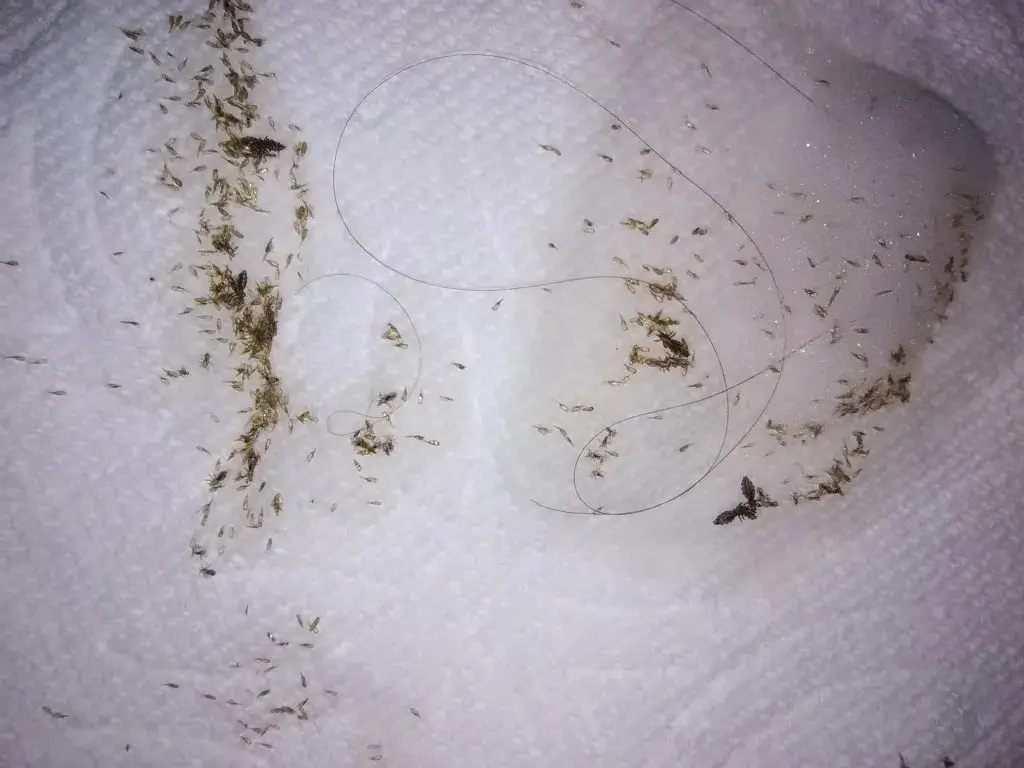
Examining the structure and composition of nits on paper towel provides valuable insights into the behavior and characteristics of these tiny creatures. By understanding how nits appear on paper towel, we can gain a deeper understanding of their life cycle, reproductive habits, and potential implications for hygiene and health.
Examining the Structure and Composition of Nits on Paper Towel
When examining the structure and composition of nits on the paper towel, it is important to note that nits are the eggs of lice that attach themselves to hair shafts. These eggs are oval and are typically yellowish or white. The size of nits on paper towels can vary, but they are generally tiny, with an approximate length of about 0.8 mm.
Under a microscope, the outer shell of a nit appears smooth and translucent. This outer shell, also known as the chorion, is made up of a tough protein structure that helps protect the growing embryo inside. The shell is flexible and allows for expansion as the embryo develops. Inside the unit, there is a tiny developing louse, surrounded by the necessary nutrients and protective membranes.
The Implications of Nits on Paper Towel
The presence of nits on paper towels can have several implications, particularly in terms of hygiene and preventing the spread of lice. Nits that are found on paper towels may indicate that an infested person has come into contact with the paper towel, potentially leaving behind viable eggs that can lead to re-infestation.
To prevent the spread of lice, it is crucial to dispose of paper towels that may have come into contact with nits properly. It is also important to establish good hygiene practices, such as washing hands thoroughly after handling potentially contaminated paper towel or any other items.
Furthermore, the presence of nits on paper towel could be an indicator of a wider lice infestation. If nits are frequently found on paper towel or other surfaces, it may be essential to take proactive measures to address the root cause and eliminate lice from the environment effectively.
Conclusion
Understanding the structure, composition, and implications of nits on paper towel provides valuable insight into the behavior and characteristics of lice. By being aware of the presence of nits and taking appropriate measures to prevent their spread, we can minimize the risk of lice infestation and maintain good hygiene practices.
Identifying Nits On Paper Towel: A Step-By-Step Guide
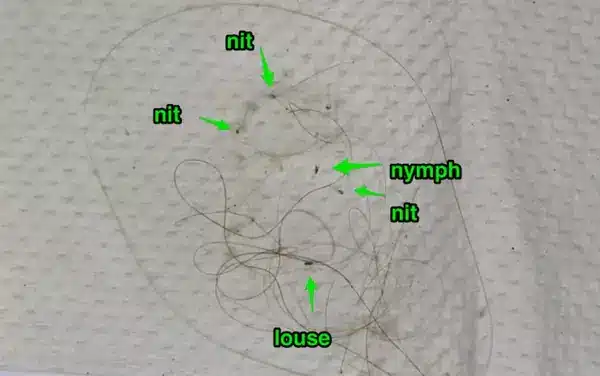
Identifying nits on paper towel can be a crucial step in determining the presence of lice in your home. If you suspect an infestation, this step-by-step guide will help you understand how to identify nits on paper towel accurately. By following these simple steps, you can gain valuable insights into the presence of lice and take necessary actions to eliminate them. Let’s get started with our step-by-step guide for identifying nits on a paper towel.
Step 1: Setting up the Experiment
The first step in identifying nits on paper towel is to set up the experiment correctly. Here’s what you need to do:
- Take a clean, white paper towel and fold it into a small square.
- Prepare a spray bottle with water to moisten the paper towel.
- Gather a few strands of hair with suspected lice eggs (nits) and place them on the paper towel.
Once you have set up the experiment, move on to the next step to observe nits on the paper towel.
Step 2: Observing Nits on a Paper Towel
Now that you have the paper towel prepared with suspected lice eggs, it’s time to observe them closely. Here’s how to do it:
- Hold the paper towel against a well-lit area to get a clear view of the nits.
- Use a magnifying glass to examine the paper towel for tiny, oval-shaped eggs attached to the hair strands.
- Look for nits that are translucent or light brown, as they are typically mature eggs.
- Note: Nits may appear as small white dots or tiny brown specks and may be challenging to spot without close observation.
By carefully observing the paper towel, you can identify the presence of nits. However, it’s crucial to differentiate them from other substances to ensure accurate identification.
Step 3: Differentiating Nits from Other Substances
When examining nits on a paper towel, it’s essential to differentiate them from other substances that might be mistaken for lice eggs. Here are a few tips to help you differentiate nits:
- Pay attention to the shape and size of the suspected nits. They should be oval-shaped and about the size of a pinhead.
- Check if the eggs are firmly attached to the hair strands. Nits are typically glued close to the hair shaft and are not easily removed.
- Compare the color of the suspected nits with other debris on the paper towel. Nits are usually lighter in color compared to dirt or dandruff.
- Note: If you are unsure whether the substance on the paper towel is a nit or something else, it’s always best to consult a professional for accurate identification.
Now that you know how to differentiate nits from other substances let’s move on to some tips for accurate identification.
Step 4: Tips for Accurate Identification
To ensure accurate identification of nits on paper towels, consider the following tips:
- Take multiple samples from different areas of the scalp to increase your chances of finding nits.
- Use proper lighting and magnification tools to enhance your observation and make it easier to spot nits.
- Compare your findings with reference images or descriptions available online to confirm the presence of nits.
- Note: If you continue to have doubts or difficulty identifying nits, it’s advisable to seek professional help to confirm the presence of lice.
In conclusion, identifying nits on a paper towel can be a simple yet crucial step in determining the presence of lice. By following this step-by-step guide and using the tips provided, you can accurately identify nits for effective lice treatment. Remember, when it comes to lice, early detection, and timely action are key to preventing further infestations.
Environmental Influences On Nits
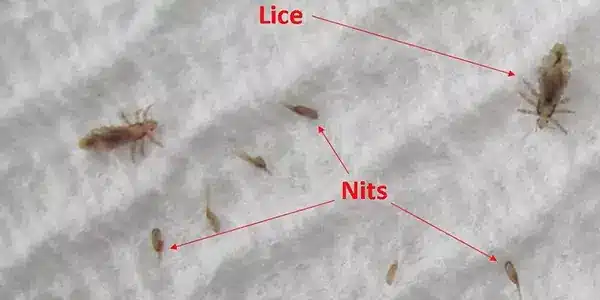
When it comes to dealing with nits, understanding the environmental influences on these stubborn pests is crucial. Certain factors such as climate, temperature, moisture, and humidity can greatly impact the lifecycle and survival of nits. By elucidating these influences, we can gain a better understanding of how to effectively combat them.
Climate and Temperature Effects
Climate and temperature play a significant role in the development and viability of nits. These pesky critters thrive in environments that are warm and humid, making them particularly prevalent in regions with tropical or subtropical climates. High temperatures accelerate the incubation period of the nit eggs, increasing the risk of infestation.
Moderate temperatures ranging between 75°F and 85°F are ideal for nit survival, as they promote the growth and hatching of eggs. Nits can struggle to survive in colder climates, with temperatures below 40°F hindering their development. However, it is important to note that adult lice can endure colder temperatures better than eggs or nits.
Moisture and Humidity Considerations
Moisture and humidity also greatly impact the reproductive capabilities of nits. These tiny eggs require adequate moisture levels to maintain their viability. Humidity plays a crucial role in the hatching process, as it prevents the eggs from drying out. Nits prefer environments with humidity levels ranging between 70% and 80%.
Excessive dryness can pose a challenge for nits, as it can cause desiccation and reduce their ability to hatch. On the other hand, excessive moisture can create an ideal breeding ground for lice. Bathrooms, where moisture levels are typically high, are notorious hotspots for nit infestations.
In conclusion, understanding the environmental influences on nits is crucial for effective nit management. By recognizing the impact of climate, temperature, moisture, and humidity, we can take proactive measures to prevent and eradicate nits. Implementing strategies such as maintaining optimal temperature and humidity levels can help minimize the risk of infestations.
Time And Storage Effects On Nits
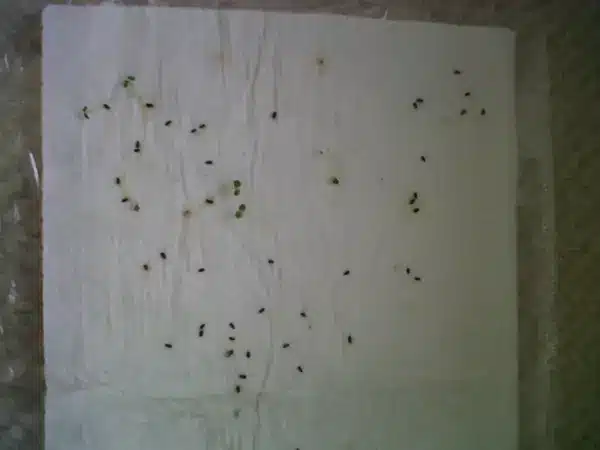
When it comes to examining nits on a paper towel, factors such as time and storage conditions can have a significant impact on their appearance. In this article, we will explore how long nits can remain visible on a paper towel and the influence of storage conditions on their overall appearance.
How long can nits remain visible on a paper towel?
When you find nits on a paper towel, it’s natural to wonder how long they can actually stay visible. Nits, which are lice eggs, can vary in their durability depending on various factors:
- The freshness of the paper towel: A fresh paper towel with a smooth surface can help nits adhere better, allowing them to remain visible for a longer period.
- The temperature and humidity levels: High humidity and warm temperatures can accelerate the deterioration of nits, making them less visible over time.
- The presence of other substances: If the paper towel comes in contact with oils, liquids, or other substances, the nits may be compromised and their visibility reduced.
Considering these factors, nits can typically remain visible on a paper towel for up to a few days. However, it’s crucial to note that their appearance may gradually fade over time as they become more transparent or disintegrate. This brings us to the next point – the impact of storage conditions on nit appearance.
Impact of storage conditions on nit appearance
Storage conditions play a vital role in preserving the visibility of nits on a paper towel. Here are some key factors to consider:
| Storage Conditions | Effect on Nit Appearance |
|---|---|
| Airtight container or plastic bag | Helps maintain the freshness of the paper towel and slows down the deterioration of nits, allowing them to remain more visible for an extended period. |
| Exposure to sunlight | Direct exposure to sunlight can accelerate the degradation of nits, making them less visible in a shorter span. |
| Humid environment | High humidity can contribute to the loss of visibility of nits, as moisture can cause them to soften and become less discernible. |
By ensuring proper storage conditions, such as keeping the paper towel in an airtight container or bag and protecting it from excessive heat and moisture, you can maximize the visibility of nits for a longer duration.
Understanding the effects of time and storage conditions on nits’ appearance on a paper towel is essential for accurate assessments. By considering these factors, you can better determine the freshness and visibility of nits, aiding in efficient lice management.
Chemical Interactions And Nits On Paper Towel
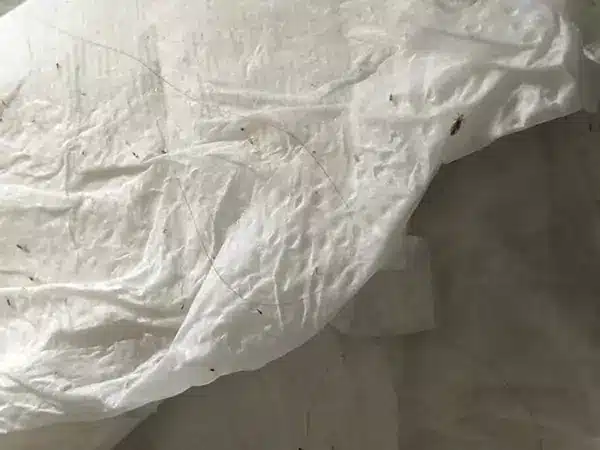
Understanding the chemical interactions between cleaning agents and nits on a paper towel is crucial for effective nit removal. When it comes to the visibility of nits on paper towels, different cleaning agents can have varying effects. Let’s explore how these chemical interactions impact the visibility of nits and how you can ensure optimum results.
Effect of cleaning agents on nit visibility
Certain cleaning agents can enhance the visibility of nits on paper towels, making it easier to identify and eliminate them. These cleaning agents typically contain surfactants or enzymes that break down the adhesive properties of nits, allowing them to be easily seen on the surface of the paper towel. Before choosing a cleaning agent, it is important to check if it contains these active ingredients to ensure optimal nit visibility.
Ensuring maximum nit visibility on paper towel
To ensure maximum nit visibility on paper towels, consider the following:
- Choose cleaning agents with surfactants or enzymes: These active ingredients help loosen the nits and make them more visible on the paper towel.
- Apply the cleaning agent properly: Follow the instructions provided by the manufacturer to ensure effective application of the cleaning agent. This will help in maximizing nit visibility.
- Use a white or light-colored paper towel: Dark-colored paper towels may make it difficult to spot nits. Opt for white or light-colored paper towels to enhance nit visibility.
- Inspect under proper lighting: Adequate lighting is essential for effective nit inspection. Ensure you inspect the paper towel under bright, natural light or use a well-lit area for optimal visibility.
By following these guidelines, you can make sure that nits on paper towels are easily visible, enabling you to address the problem more efficiently. Remember, the timely removal of nits is essential to prevent the spread of head lice and ensure a healthy environment for you and your loved ones.
Myth 1: Nits On Paper Towel Are A Sign Of Contamination
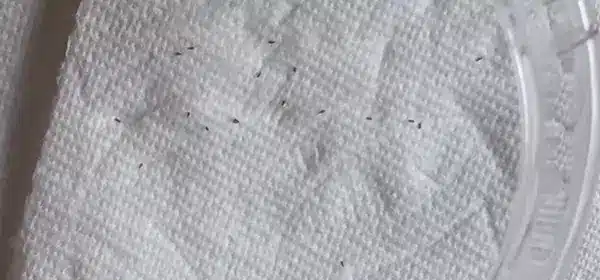
Explanation and Debunking of the Myth
There seems to be a myth circulating that finding nits on a paper towel is a surefire sign of contamination. However, let’s set the record straight and debunk this misconception.
The presence of nits on a paper towel does not necessarily indicate contamination or a problem. Nits are commonly found in various environments, including households and public spaces. While it’s true that finding nits on a paper towel may raise some eyebrows, it’s important to understand the context and consider other factors before jumping to conclusions.
Nits are the eggs of lice, and they attach themselves to the hair shafts near the scalp. Lice eggs can easily fall off the hair and end up in unexpected places. This can include items like bedding, clothing, and yes, even paper towels. Therefore, finding nits on a paper towel could simply mean that someone with lice used the towel or touched it with infested fingers. It does not mean that the paper towel itself is contaminated or that it poses any immediate health risk.
It’s crucial to differentiate nits from actual lice. Nits are small, oval-shaped, and have a whitish or yellowish color. They are firmly attached to the hair shafts and can be difficult to remove. On the other hand, lice are the actual insects that crawl on the scalp. These insects are visible to the naked eye and are typically reddish or brownish.
If you come across nits on a paper towel, it’s important to assess the situation properly before concluding that it is a sign of contamination. Consider the following factors:
Factors to Consider when Encountering Nits on Paper Towel:
- Context: Are you in a setting where lice infestations are common, such as a school or childcare facility?
- Recent exposure: Have you or someone else been in close contact with someone who has confirmed lice infestation?
- Other evidence: Have you found any actual lice on your or someone else’s scalp or hair?
- Frequency: Is this a one-time instance or consistently occurring?
If you believe there may be a genuine cause for concern, it’s best to consult with a healthcare professional or a specialist in lice infestations. They can provide expert advice, conduct proper examinations, and determine the necessary steps to address any potential infestation properly.
Remember, finding nits on a paper towel alone should not automatically be considered a sign of contamination. Proper assessment and understanding of the context are crucial to avoid unnecessary panic or misunderstandings. Ultimately, it is essential to rely on professional guidance to accurately diagnose and address any potential lice-related issues.
Myth 2: Nits On Paper Towel Are Harmful To Health
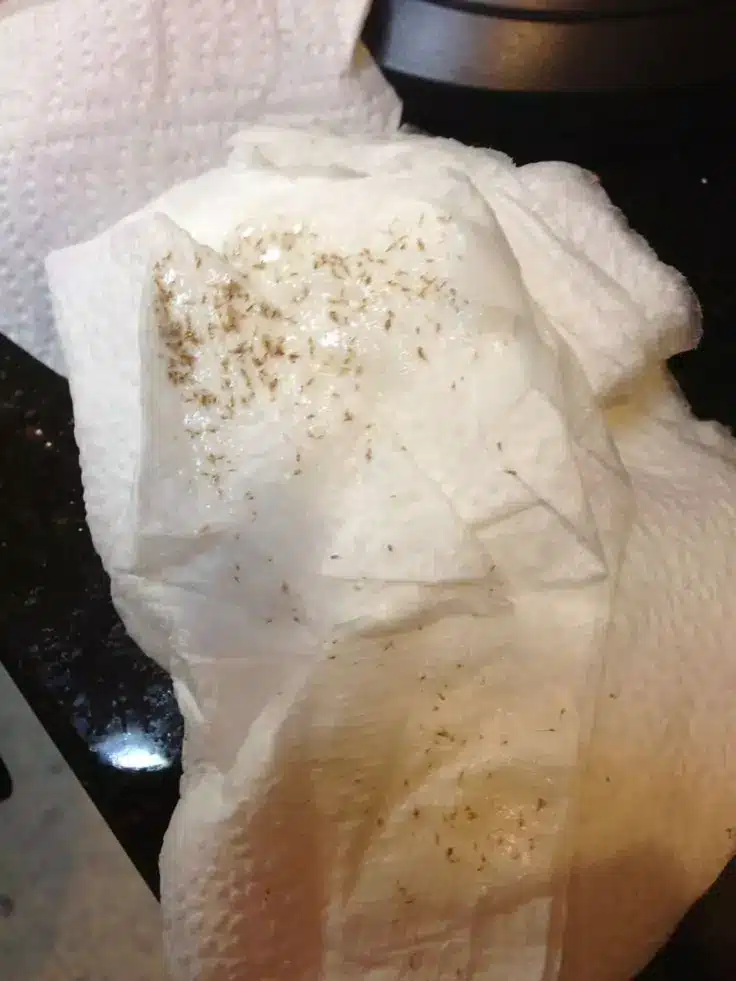
Clarifying the truth behind this misconception
There is a common misconception that nits on paper towel can be harmful to health. However, it is important to clarify that this notion is a myth. Nits, which are the eggs of head lice, are typically found on human hair rather than on paper towels.
Head lice are tiny insects that infest the hair and scalp, laying their eggs close to the scalp where the temperature is ideal for their development. These eggs, or nits, are usually firmly attached to individual strands of hair and can be difficult to remove.
When it comes to paper towels, there is typically no direct risk to one’s health. Nits require the warmth and moisture of the scalp to survive and hatch into lice. Therefore, any nits that may accidentally end up on a paper towel are unlikely to pose a health hazard.
What to do if you find nits on a paper towel
If you happen to come across nits on paper towels, it is important to remember that they are already separated from the warmth and moisture required for their development. Taking the following steps can help clarify this situation:
- Dispose of the paper towel: It is advisable to throw away the paper towel in a garbage bag and tie it securely. This will ensure that any potential nits are safely contained and prevent any further contact.
- Wash your hands: After disposing of the paper towel, thoroughly wash your hands with soap and warm water. This will help eliminate any potential germs or contaminants.
- Inspect the scalp: If you are concerned about the presence of head lice or nits, it is important to inspect the scalp and hair carefully. Look for any signs of itching, redness, or small white or brown oval-shaped eggs attached close to the scalp.
- Consult a healthcare professional: If you suspect an infestation, it is recommended to consult a healthcare professional, such as a doctor or pharmacist. They can guide proper diagnosis and treatment options.
Overall, while finding nits on paper towels may be unsettling, it is essential to understand that the risk of harm to health is minimal. By following the appropriate steps to dispose of the paper towel and seeking professional advice if necessary, one can effectively address any concerns related to head lice infestations.
Myth 3: Nits On Paper Towel Are Indicative Of Poor Quality
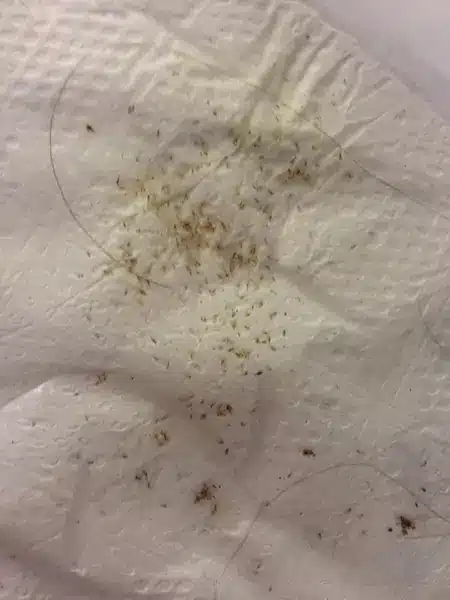
Addressing the Misconception
One common misconception that arises when examining nits on paper towels is the belief that it is a sign of poor quality. However, this is far from the truth. In reality, the presence of nits on a paper towel is not an indication of its quality or effectiveness. Let’s dig deeper into why this misconception exists and provide accurate information to debunk it.
Information about Nits on Paper Towel
To understand the truth about nits on paper towels, it’s important to have a clear understanding of what nits are. Nits are the eggs of lice, typically found on the strands of hair. They are small and oval-shaped, about the size of a pinhead, and are usually yellow or white.
When nits are present on a paper towel, it is not an indication of the paper towel’s quality, but rather a result of external factors such as cross-contamination. Nits can easily transfer from the hair onto different surfaces, including paper towels, through contact. This can happen when someone with lice touches a paper towel after itching their head or using the towel to wipe their hair.
To further debunk the myth, it’s important to note that paper towel manufacturers adhere to strict quality control measures to ensure the production of high-quality and hygienic products. The presence of nits on a paper towel does not reflect the overall quality or cleanliness of the towel itself.
Conclusion
In conclusion, it’s crucial to dispel the misconception that nits on paper towels are indicative of poor quality. The presence of nits is simply a result of cross-contamination and has no bearing on the towel’s effectiveness or cleanliness. By understanding the true nature of nits and the factors that contribute to their presence on paper towels, we can avoid the false assumption that it reflects poorly on the quality of the product. So, the next time you come across nits on a paper towel, rest assured that it does not compromise the overall quality of the towel.
Conclusion: The Truth About Nits On Paper Towel
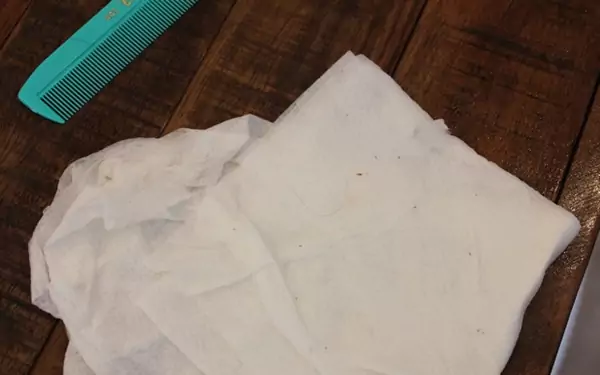
Recap of key points covered
Throughout this blog post, we have taken an in-depth look at what nits look like on a paper towel. We started by understanding what nits are, which are the eggs laid by head lice. These tiny, oval-shaped eggs can easily be mistaken for other debris on a paper towel, making their accurate identification crucial.
We then discussed the characteristics of nits on a paper towel. Nits are typically white or yellowish and are attached firmly to the fibers of the paper towel. They are small in size, ranging from 0.8 to 1.2 millimeters, and have a distinct teardrop shape.
Next, we explored the potential confusion surrounding nits on a paper towel. Due to their size and appearance, nits can be easily overlooked or misidentified as lint or other particles. This can lead to ineffective treatment and the risk of re-infestation.
Additionally, we examined the consequences of mistaking nits for other substances on a paper towel. Head lice infestations can spread quickly, especially in schools and households with young children. Proper identification of nits on a paper towel is vital to preventing the infestation from spreading and ensuring effective treatment.
Importance of accurate identification of nits on paper towel
Accurate identification of nits on a paper towel is crucial for several important reasons:
- Effective treatment: Misidentifying nits can lead to ineffective treatment, as the actual cause of the infestation may not be properly addressed. By accurately identifying nits on a paper towel, individuals can take the necessary steps to eliminate head lice and prevent re-infestation.
- Preventing the spread of head lice: Head lice can easily spread from person to person, especially in close contact environments such as schools. By accurately identifying nits on a paper towel, individuals can take immediate action to prevent the spread of head lice to others.
- Reducing the risk of re-infestation: If nits on a paper towel are misidentified or overlooked, there is a high likelihood of re-infestation. Proper identification and treatment can help break the life cycle of head lice, minimizing the risk of re-infestation in the future.
To recap, accurate identification of nits on a paper towel is crucial for effective treatment, preventing the spread of head lice, and reducing the risk of re-infestation. By understanding the characteristics of nits and the potential confusion surrounding their identification, individuals can take the necessary steps to address head lice infestations and ensure the well-being of themselves and those around them.
Frequently Asked Questions Of What Do Nits Look Like On Paper Towel
What Do Nits Look Like On Paper Towel?
Nits on paper towels appear as tiny, oval-shaped, greyish-white specks attached to the fibers. They are similar in size to a grain of sand and can be easily spotted due to their distinctive shape and color. Nits are the eggs of head lice and can be a sign of infestation.
Conclusion
To sum up, nits on paper towels can easily be mistaken for harmless specks of dirt or debris. However, it is crucial to be aware of their presence, as they can potentially lead to infestations if left unchecked. By understanding what nits look like and taking appropriate actions to eradicate them, we can maintain a clean and hygienic environment in our homes or workplaces.
Regular vigilance and proper sanitation practices are key to preventing the spread of nits and ensuring a pest-free environment.
